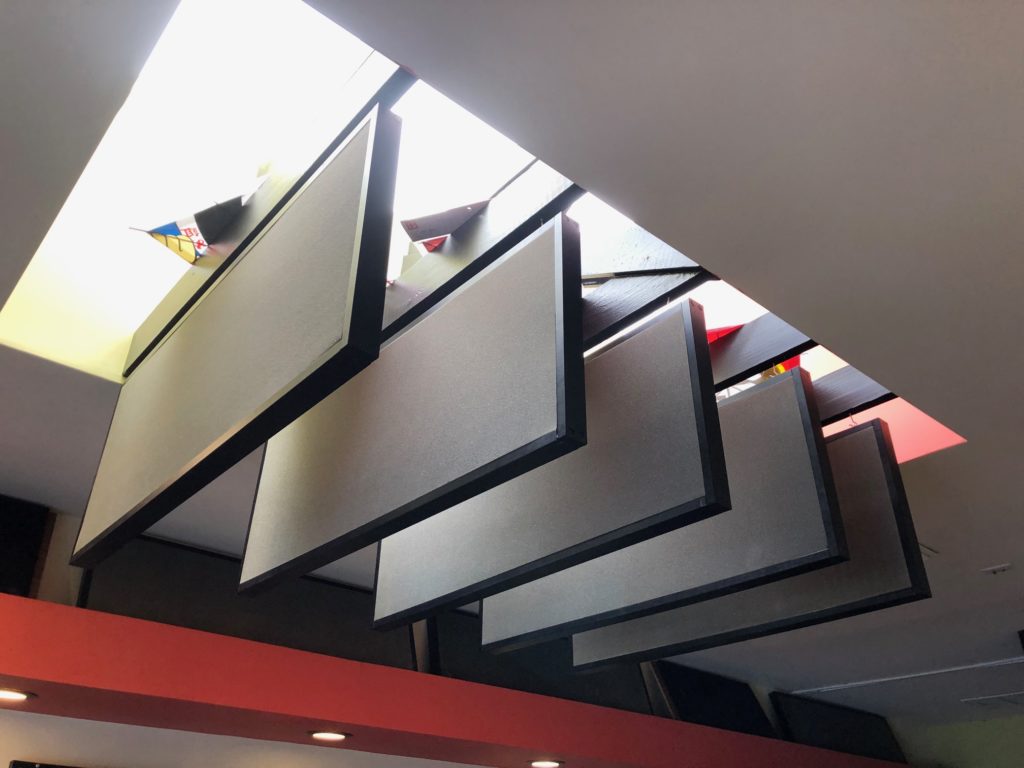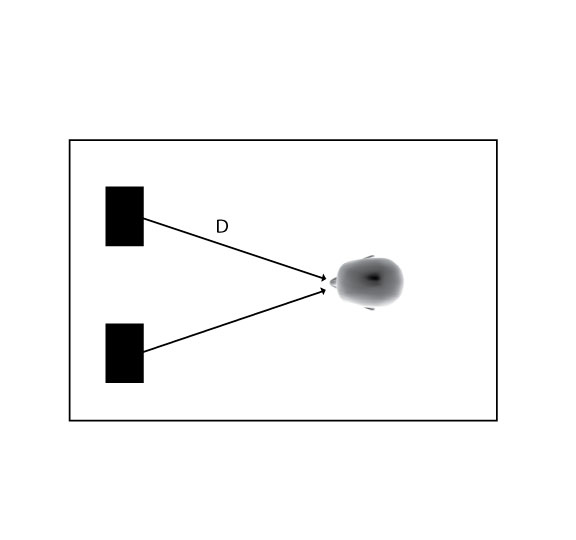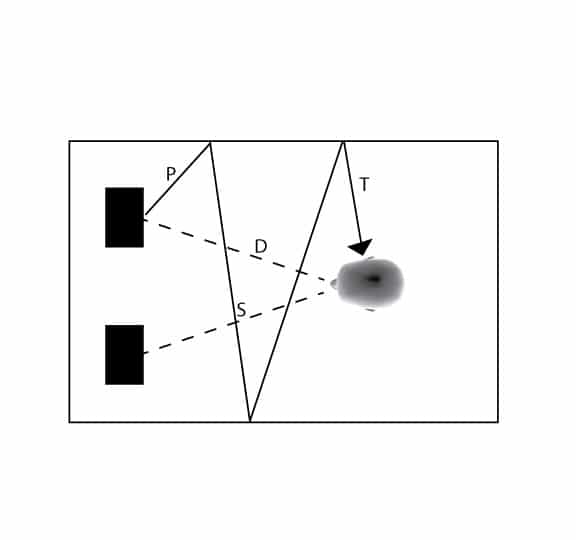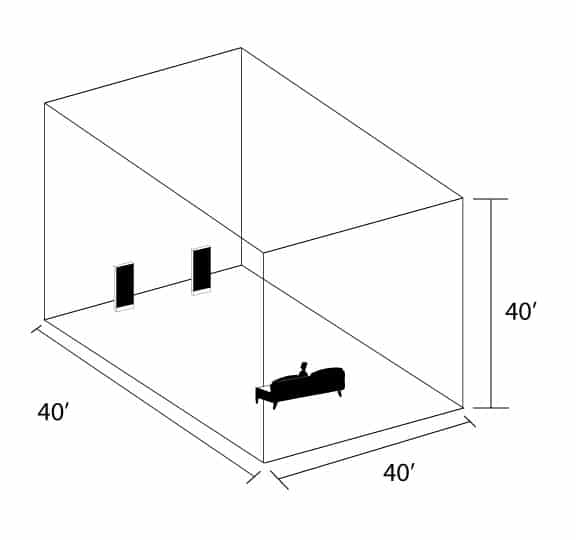If you are in pursuit of acoustic reverberation control, there are some important measurements and definitions you must first be aware of if you want to find the proper application and eventual acoustical treatment for your room or studio. Let’s examine some of these measurements and try and place some real-world meaning to them so that we can understand what works for acoustical treatment and what does not. Our first measurement is reverberation times. Some call it acoustic reverberation. We have updated this blog on 12/2/19 to reflect new knowledge and experience.
Acoustic Measurements You Need To Take In Small Rooms
If you remember from our past articles, we discussed direct and reflected energy within our small rooms. Direct energy is that straight-line energy from our loudspeakers. All other energy heard or felt at the listening position is reflected energy or “room sound”. Reverberation takes this definition and expands upon it. Reverberation times are defined in the time domain and they are the amount of time it takes for an audible decay from the original direct sound. It is the time difference between the direct and last life or audibility of the reflection time of the last wave or ray. This number is called the Rt-60 time or a measure of acoustic reverberation.
Reverberation definition: https://en.wikipedia.org/wiki/Reverberation
Rt – 60
Rt – 60 is a number that illustrates that difference we just discussed above between direct and reflected, for the reflections to decay 60 dB. The scale one uses for this number, can be a single value or you can also measure it by applying a wideband signal. That scale can go from 20 Hz. – 20,000 Hz. A more typical and narrowing of this frequency range on the scale is to use octave bands such as 1/3 octave, 1/6, 1/12, 1/24… The R-t60 numbers derived from a single number versus octave band scaling are usually different. Also, a more narrow band approach is frequency-dependent meaning the number will differ depending on frequency band measured. You must look at all frequencies and their decay rates in any reverberation room design.
Acoustic Signature
The reverberation time or acoustic reverberation time number no matter what the scale used is part of the acoustical signature of the room. In order to correctly measure the difference between the direct and reflected energy decay rates, we need to excite the room with energy but we must make that excitement and distribution of that energy uniform and consistent throughout the room. You must also work from the assumption that the room is an empty room free of anything that has an absorption coefficient attached to it in order to reach a true calculation. If you are using the room for a critical listening environment then you need to place furniture and all other items that you will use within the room. Every piece of furniture and any other thick foam-filled object will reduce the Rt-60 times by absorbing energy at certain frequencies.
Acoustic Panels: https://www.acousticfields.com/product/acoustic-panels/
Diffuse Sound Field
We now have our empty room with an energy source that is omnidirectional and all the internal room volume is filled with equally distributed energy/reflections, therefore you must now assume a diffuse sound field in order for all of this to occur. When testing equipment is brought in, do not use sources such as a hi-fi speaker that has by design (to minimize room effect due to reflections) use a narrower energy projection of sound energy into the room. You must use caution when dealing with the speaker/room interaction and not introduce any more distortion into the deal. When we measure Rt-60 times, our engineers bring in a self-powered monitor. A sine wave is generated and the room response measured. This process is critical when dealing with the reverberation room design or acoustic reverberation.
Use Multiple Measurements
The proper way to achieve good results is to use not just one measurement or just one value. Let’s take a series of measurements at different frequency bands and then measure the rate of decay over a series of predetermined sound pressure levels. Do not forget to focus particular attention to the mid-range frequencies. Reverberation times are super critical when it comes to middle range frequencies. It is critical that you preserve the timbre and the spectral balance of any frequency in these middle bands where our vocals lie. This clarity provides us with the emotional connectivity to our music. Reverberation is room distortion. Our goal is to reduce room distortion so we can hear more of the source.
Middle Frequencies / Reverberation Times
The middle frequency reverberation times is an area that must be focused upon. You need to look at the middle frequency reverberation times and how these times relate to middle frequencies. This factor is critical because you do not want to alter any spectral balance or content of the original music signal. This is an area where our vocals lie and care must be taken not to modify this frequency range with excessive reverberation times. We do not want any distortion in our middle range frequencies. This is where our vocals lie and our emotional connection to our music.

Acoustic Treatment Inside Kaito Sushi Bar
Direct And Reflected Energy
Our final sonic experience within our room is composed of both direct and reflected energy. Our room is a space where we have reflected (room sound) and direct energy from our speakers. Together they produce the sonic experience we define within the room. The sound within the room is a balance of direct, early and late reflections that together combine with the acoustics of the room boundaries. Unfortunately, RT 60 measurements will not assist us with this but it does provide certain ranges of reverb times that allow for all of this energy to produce a quality sound field.

Acoustic Panels Hung From Ceiling
In Summary
So I hope that helps you in pursuit of true reverberation control in your room. If you have any questions at any time I am always on hand to help answer them. Leave them in the comments section or email me at info@acousticfields.com. If you would like to learn more about room acoustics please sign up for my free videos and ebook by joining the mailing list here. I send room tuning tips and things for you to test in your room every Wednesday. They are easy to follow and really help you enjoy more of your music.










